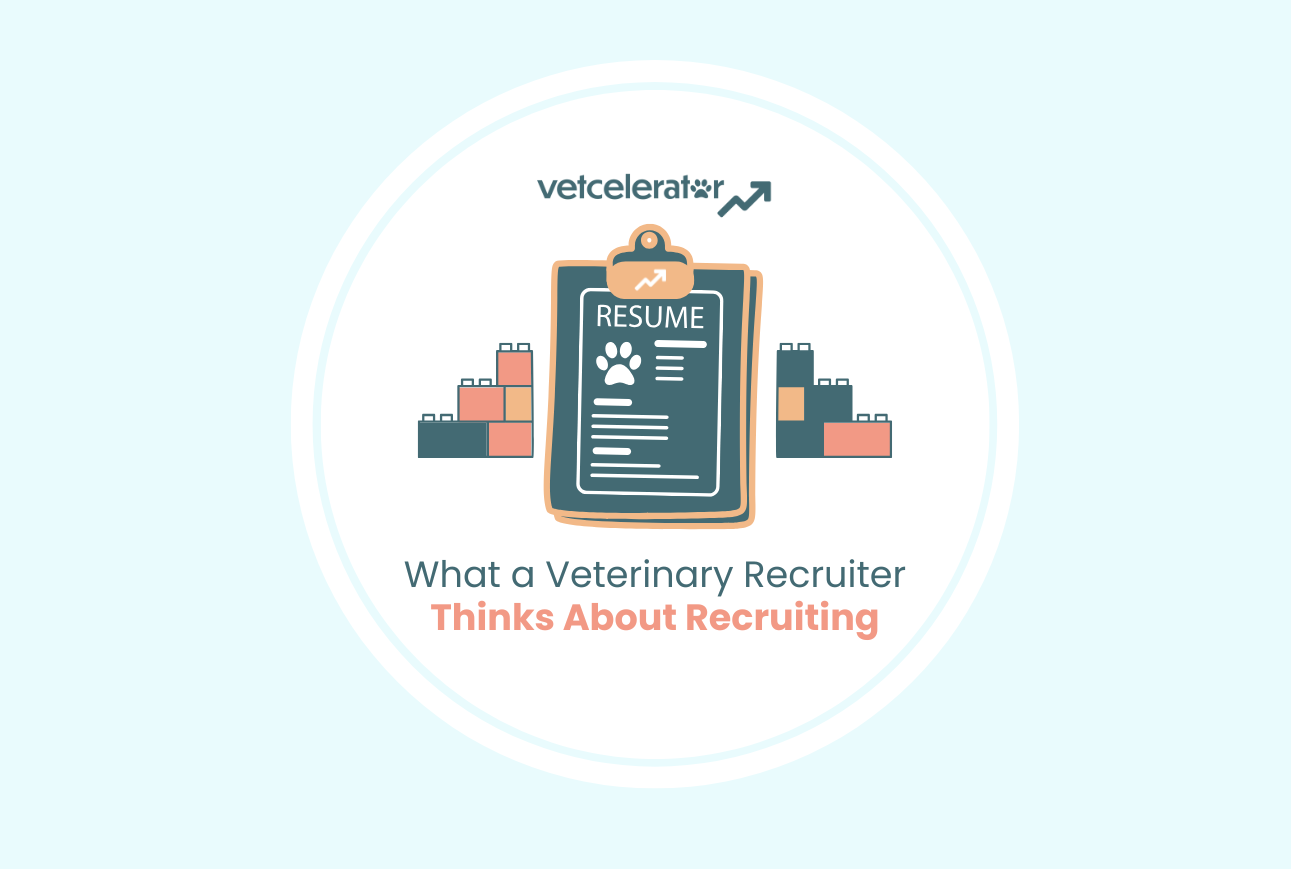
I’m Austin, the Recruiting Manager at Vetcelerator, and I love Lego. There’s a moment every Lego fan knows well: that satisfying pause when you place the final brick, sit back, and admire the completed build. All the pieces you’ve been carefully sorting and snapping suddenly come together into something bigger than the sum of its parts.
That’s exactly how I view veterinary recruiting. Each candidate, each clinic, each interview and conversation is a piece in a larger puzzle. My job is to make sure the pieces connect because when the right piece clicks into place, the entire structure is stronger.
A good veterinary recruiter shouldn’t be rushing to slap bricks together. Just like a Lego build, the foundation matters, the middle layers take time, and the final product needs to feel solid enough to last.
What Makes a Good Veterinary Recruiter?
It can be tempting to see veterinary recruiting as a race to the finish line. Gather resumes, make calls, push names forward, rinse and repeat. On paper, that’s efficient. In reality, that’s like dumping out a box of Lego bricks and trying to force them together without even looking at the instructions.
The truth is that vet clinics are looking for someone who can become a trusted teammate and a long-term contributor who fits into their workplace culture. My approach focuses less on “speed-to-fill” and more on “fit-to-last.” If you’re curious about other good qualities when vetting recruiters, check out another blog I’ve written on what to look for in a veterinary recruiter.
Hasty Hiring Doesn’t Work for Vet Clinics
If the wrong piece gets forced into the wrong spot, the entire Lego structure becomes unstable. It may hold for a while, but cracks eventually show. A hasty hire can create turnover and an endless cycle of rehiring. The right hire, however, strengthens the foundation for your entire team.
How Much Does Salary Matter in Veterinary Recruiting?
Compensation is always part of the equation because salary sets the baseline in the hiring process. But after years of recruiting, I’ve noticed something powerful: candidates often weigh how they felt in the interview process, workplace culture, and growth opportunities just as heavily, sometimes even more.
I’ve spoken to veterinarians who were willing to take a slightly lower salary because the clinic’s mentorship opportunities were invaluable to them. I’ve seen technicians choose clinics where they felt like the team actually worked well with each other, even if another practice offered a few extra dollars an hour.
It’s The Same in Lego and Recruiting
You could have the most expensive, rare bricks in the world, but if they don’t connect properly, all you end up with is a pile of mismatched parts. True value comes from how the pieces fit together into one singular brand.
What is a Veterinary Recruiter’s Job Anyway?
Many people think of recruiting as matchmaking, but I like to think of it more like architecture. A veterinary recruiter’s job is to build intentionally, step by step, until the structure makes sense. This requires:
- Listening deeply to candidates. What do they want in their next role? What matters to them beyond the job title? Where do they see themselves growing?
- Understanding the clinic’s goals. Is the practice focused on growth? Do they need a leader who can mentor newer staff? Are they searching for someone who can handle specific surgeries? Are they looking to maintain a certain veterinarian-to-staff ratio?
- Looking for the right fit for now and the future. A quick fix might plug the gap, but I’m interested in helping clinics build teams that last.
The strongest Lego sets are built over time with patience and intention. Recruiting should be the same way.
Recruiting Lessons from Building with Lego
If you’ve ever built a Lego set, you know it teaches you a lot more than you’d expect about things like patience and goal-setting. I’ve found four lessons in there that directly translate to veterinary hiring.

Lesson #1: Start With The Foundation
Without a strong base, everything else crumbles. In recruiting, that means knowing exactly what a vet clinic needs and what a candidate wants before you even begin.

Lesson #2: Don’t Skip Steps
Jumping ahead in a Lego build almost always means you’ll miss something important. In veterinary recruiting, skipping the “get to know you” step with candidates or failing to ask a veterinary practice about culture details can lead to mismatches later.

Lesson #3: Expect Some Trial and Error
Sometimes a piece looks like it fits, but it doesn’t. Recruiting is similar. A candidate might seem perfect on paper, but the cultural connection isn’t there. That’s not a failure by the veterinary recruiter or the candidate. It’s just part of the process.

Lesson #4: The Final Click Is Worth It
When that last brick locks into place, the whole build feels complete. When a candidate and clinic owner/practice manager both light up because they’ve found their match, it’s the same feeling.
The Reward of Being a Veterinary Recruiter
I often tell people that being a veterinary recruiter at Vecelerator has been one of the most rewarding jobs I’ve ever had. Why? Because recruiting gives me those “finished build” moments over and over again.
Helping a candidate find a clinic where they feel valued and able to grow is incredibly fulfilling. Watching a practice welcome someone who strengthens their team is equally rewarding.
Being a veterinary recruiter is about people, connection, and the satisfaction of seeing something bigger take shape. I couldn’t ask to be part of a better profession.
Are You Looking for a Veterinary Recruiter?
If you are looking to find the next right piece for your veterinary clinic or pet brand, I’d love to talk to you. You can learn more about recruiting services at Vetcelerator and set up a free consultation by checking out our designated Recruiting page.




